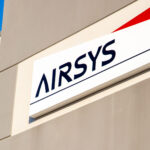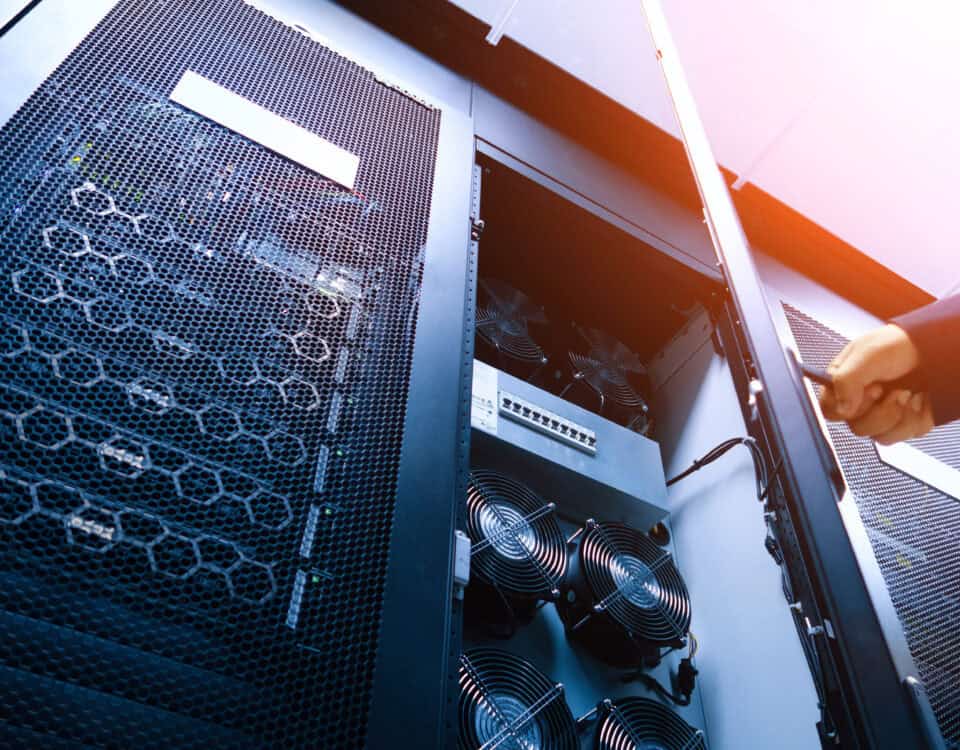
How Do Cooling Systems Enable Cloud Elasticity?
October 6, 2025
AIRSYS Unveils PowerOne™ AI-Era Cooling Solutions for Modern Data Centers
November 17, 2025The demand for AI-ready data center capacity shows no signs of slowing down, and is projected to grow at an average rate of 33% annually through 2030, according to McKinsey & Company. As AI workloads intensify, so do power and cooling requirements, putting data center operators under growing pressure to maintain performance without sacrificing efficiency.
Ironically, while AI is the source of today’s data center cooling challenges, it can also be the key to solving them. In fact, Gartner analysts predict that early AI adoption will be a defining factor separating next-generation facilities from the others.
So, if high-density data centers power AI computing, shouldn’t they also harness AI to streamline their own operations?
AI — A Challenge and the Solution
The rapid expansion of AI in daily life has introduced an immense computational burden for data centers. What these models demand is clear: faster computing, uninterrupted availability, and the infrastructure to support it. This surge in performance requirements puts intense pressure not only on IT equipment, but also on the cooling systems that safeguard its operation.
In this context, AI is both a driver of innovation and a source of strain on data center cooling systems. Traditional methods are struggling to keep up with the thermal demands of AI workloads, even as the need for AI-ready infrastructure accelerates.
Yet, the very technology that fuels these challenges may also offer a path forward. By applying AI to the cooling systems themselves, data centers can turn a liability into a strategic advantage. In essence, AI becomes the source of the problem and the key to its resolution.
How Is AI Used to Cool AI Data Centers?
Cooling with AI means applying techniques like machine learning and predictive analytics to improve how thermal conditions are monitored, managed, and optimized. These technologies bring speed, precision, and foresight to a traditionally reactive function, making cooling more efficient and adaptive to the unique demands of AI workloads.
This approach is reflected in three core capabilities:
- Real-time analysis
- Dynamic cooling optimization
- Predictive capabilities
AI Cooling in Action: Three Core Capabilities
1. Real-Time Analysis
Modern AI cooling systems rely on a vast network of sensors and algorithmic controls distributed throughout the data center. These systems continuously collect real-time data on temperature, humidity, airflow, and equipment usage, then analyze it to build a comprehensive view of thermal conditions across the facility.
With this macro understanding of cooling needs and patterns, the system can detect even minor anomalies or emerging hotspots before they escalate, facilitating more targeted, efficient cooling responses.
2. Dynamic Cooling Optimization
Once AI-driven controls analyze cooling inefficiencies, the cooling system can automatically adjust its component operation in real-time, fine-tuning output based on actual needs. This ensures that the system delivers just the right amount of cooling, precisely where and when it’s required, without wasting energy.
These adaptive responses enable the cooling system to maintain optimal thermal conditions across the facility, even as workloads shift. Examples of dynamic cooling optimization include:
- Increasing fan speed in specific aisles where localized hotspots are detected
- Redirecting airflow away from underutilized racks
- Lowering chiller output during periods of low compute activity
- Switching between liquid and air cooling in hybrid systems
- Adjusting coolant flow rates in liquid-cooled servers for efficient heat transfer
- Enabling precise temperature control in immersion-cooled environments
3. Predictive Capabilities
One of the most powerful aspects of AI in cooling systems is the ability to forecast thermal conditions before problems arise. Rather than reacting to rising temperatures, AI can anticipate cooling needs based on historical patterns, workload schedules, and even time-of-day usage trends. For example, if the system learns that a particular AI training workload regularly causes GPU temperatures to spike in a specific rack, it can adjust cooling in that area ahead of time, reducing thermal risk while optimizing energy use.
In addition to managing airflow and temperature, AI enables predictive cooling infrastructure maintenance. By analyzing data from sensors embedded in fans, chillers, pumps, and other components, AI can detect subtle signs of wear, inefficiency, or impending failure. This allows data center teams to proactively address issues, replace or repair parts before they break down, avoid unplanned downtime, and maintain consistent cooling performance.
The Benefits of Cooling AI with AI
AI-powered cooling brings long-term improvements to data center efficiency, reliability, and performance. Key benefits include:
- Increased Energy Efficiency: By preventing overcooling and fine-tuning operations, AI significantly reduces wasted energy and improves PUE rates.
- Enhanced Hardware Longevity: Stable temperatures help extend the lifespan of expensive components, like GPUs and accelerators.
- Improved Reliability: AI ensures consistent thermal control, keeping hardware within safe temperature ranges and minimizing the risk of downtime.
- Cost Reduction: Lower energy use, fewer failures, reduced maintenance, and longer hardware lifespans — all contribute to lower operational costs and improved ROI.
- Support for Cloud Elasticity: AI-driven, intelligent, and energy-efficient cooling sets the foundation for elastic computing by creating optimal conditions for cloud applications.
- Scalability for Future AI Workloads: An AI-ready cooling system ensures adaptability to growing thermal loads, making it easier to scale infrastructure as demands increase.
Update Your Infrastructure with AI-Driven Cooling
AI has fundamentally changed what data centers are built to support, especially when it comes to cooling. But what once felt like a challenge created by AI is now an opportunity to improve thermal performance, using the same intelligence that caused the shift.
AIRSYS engineers intelligent data center cooling solutions, purpose-built for this new era. From real-time optimization to predictive thermal management, systems like PowerOne™ are designed to help you achieve more performance, efficiency, and scalability, without overbuilding or overheating.If you’re ready to stay ahead of the curve and set your data center for success in the age of AI, contact us today, and let’s make your cooling strategy more resilient.



